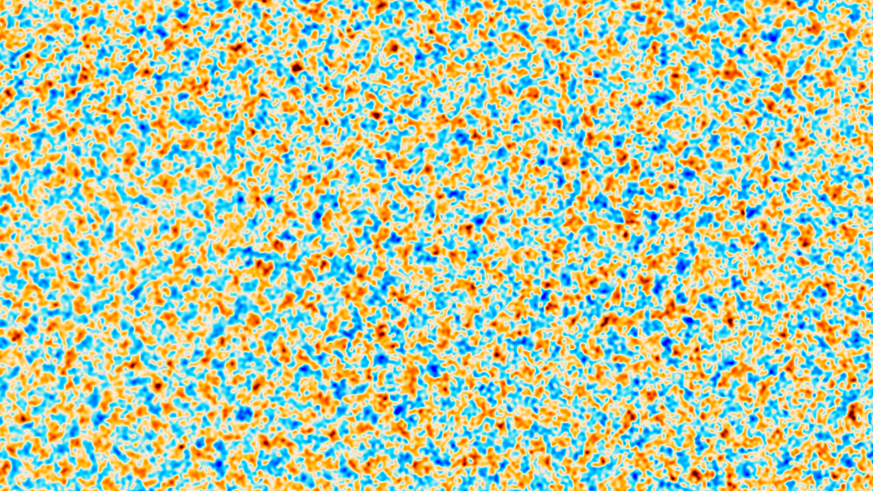Nature’s oldest light gives new insight into the age of the universe
15 July 2020

An international team including scientists from Cardiff University have provided a new estimate of the age of the universe, placing it at roughly 13.77 billion years old.
This new measurement, made using the Atacama Cosmology Telescope (ACT) in South America, adds a new twist to an ongoing debate over the exact age of the universe.
The estimate matches that made by the Planck satellite and adds support to the current standard model of the universe; however, it differs from measurements made in 2019 based on a different methodology using the movement of galaxies.
"Having worked on extracting the cosmological parameters from both ACT and Planck for almost a decade, it was very rewarding to see the two experiments agree," says Erminia Calabrese, an STFC Rutherford Fellow and Professor of Astrophysics in the School of Physics and Astronomy.
Professor Calabrese has been leading the analysis work to extract the new cosmological results and is lead author on one of two new papers submitted to arXiv.org.
The findings from these studies were made possible using the University’s high-performance computing resources, enabled by ARCCA (Advanced Research Computing at Cardiff).
Like the Planck satellite, ACT peers at the afterglow of the Big Bang. This light, known as the cosmic microwave background (CMB), marks a time 380,000 years after the universe’s birth when protons and electrons joined to form the first atoms.
If scientists can estimate how far light from the CMB travelled to reach Earth, they can calculate the universe’s age. Scientists measure the angle in the sky between two distant objects, with Earth and the two objects forming a cosmic triangle. If scientists also know the physical separation between those objects, they can use high-school geometry to estimate the distance of the objects from Earth.

Subtle variations in the CMB’s glow offer anchor points to form the other two vertices of the triangle and scientists have a strong enough understanding of the universe’s early years to know that these variations in the CMB should typically be spaced out every billion light-years for temperature and half that for polarization.
The age of the universe immediately tells us how fast the cosmos is expanding, a number quantified by the Hubble constant.
The ACT measurements suggest a Hubble constant of 67.6 kilometres per second per megaparsec.
That means an object 1 megaparsec (around 3.26 million light-years) from Earth is moving away from us at 67.6 kilometres per second due to the expansion of the universe.
This matches almost exactly the previous estimate of 67.4 kilometres per second by the Planck satellite team, and slower than the 74 kilometres per second inferred from the measurements of galaxies.

These new results from ACT add confidence on our model of the early universe and weigh in on the controversy with the expansion of the local universe where galaxies seem to be moving faster than what both ACT and Planck now measure.
Astronomy Instrumentation Group and Astronomy Group
Cardiff Hub for Astrophysics Research and Technology
The University has played an essential role in the ACT collaboration through its contribution to both instrument hardware and leading the scientific interpretation of the data.
The Astronomy Instrumentation Group, based in the School of Physics and Astronomy, were involved in the original optical design of the ACT instrument and have provided unique optical and thermal filter technology to the project, which is critical in allowing the ACT detectors to run at sub-Kelvin temperatures and to measure these minute CMB signals.
“We are very proud of our contribution to the ACT project. It is part of a legacy of decades of work that our highly skilled and dedicated team at Cardiff has contributed to this and other cornerstone astronomy projects across the globe and in space”, says Professor Carole Tucker from the School of Physics and Astronomy.
As ACT continues making observations, astronomers will have an even clearer picture of the CMB and a more exact idea of how long ago the cosmos began. The ACT team will also scour those observations for signs of physics that doesn’t fit the standard cosmological model. Such strange physics could resolve the inconsistencies between measurements of the CMB and of the motions of galaxies.
The Cardiff ACT members have received long-standing support from the STFC and funding from the European Research Council under the European Unions Horizon 2020 research and innovation programme.
Share this story
It is a friendly, approachable School with a strong commitment to teaching excellence and world class research in physics and astronomy.


